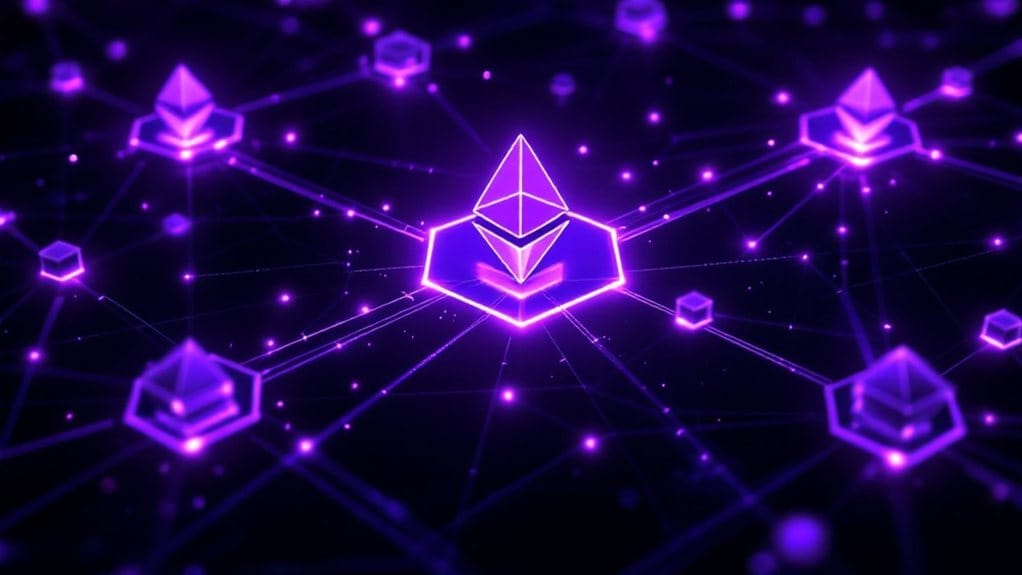Polkadot is a multi-chain network that enables different blockchain systems to communicate and transfer assets seamlessly. Developed by Ethereum co-founder Dr. Gavin Wood, it utilizes a main Relay Chain to coordinate multiple sovereign blockchains called parachains, processing over 1,000 transactions per moment. The network implements Nominated Proof-of-Stake consensus, where DOT token holders can participate in governance and support validators. This innovative architecture opens up new possibilities for cross-chain applications and decentralized finance solutions.

Polkadot represents a groundbreaking advancement in blockchain technology, operating as a multi-chain network that enables unprecedented interoperability between different blockchain systems. At its core, the platform utilizes a main Relay Chain that coordinates with multiple sovereign blockchains called parachains, which can process more than 1,000 transactions per moment while maintaining security and decentralization.
The network’s architecture, developed by Ethereum co-founder Dr. Gavin Wood, implements a Nominated Proof-of-Stake (NPoS) consensus mechanism where token holders can nominate validators to secure the network. This system involves multiple specialized roles, including validators who maintain network consensus, nominators who stake DOT tokens to support validators, collators who maintain parachain integrity, and fishermen who monitor network behavior for malicious activities. The platform offers users an attractive 12% annual interest through staking services like Kraken. The network’s innovative design enables upgrades without forks, ensuring seamless adaptation to new technological requirements.
Polkadot’s innovative NPoS system orchestrates a collaborative network of validators, nominators, collators and fishermen to ensure robust blockchain security.
Through its Cross-Chain Message Passing (XCMP) protocol, Polkadot facilitates seamless communication and asset transfers between different blockchains, enabling complex decentralized applications to operate across multiple chains simultaneously.
The platform’s shared security model allows parachains to benefit from the Relay Chain’s security measures without establishing their own validator networks, considerably reducing infrastructure costs and enhancing general network efficiency.
The DOT token serves multiple critical functions within the ecosystem, including governance participation, parachain slot auctions, and network fee payments. Similar to other governance tokens, DOT holders can vote on key platform developments and shape the network’s future through democratic processes. Developers can employ the Substrate framework to build customized blockchain applications, while existing networks like Ethereum and Bitcoin can connect to Polkadot through specialized bridges, creating a thorough web of interconnected blockchain systems.
Following its successful Initial Coin Offering in 2017, which raised over $144.3 million, Polkadot has emerged as a leading platform for blockchain innovation, particularly in decentralized finance (DeFi) applications and cross-chain services.
The Web3 Foundation continues to support the development of decentralized web technologies through Polkadot’s ecosystem, fostering an environment where public and private blockchains can interact seamlessly, share data securely, and create increasingly sophisticated applications that utilize the strengths of multiple blockchain networks.
FAQs
How Does Polkadot’s Staking System Compare to Other Blockchain Networks?
Polkadot’s Nominated Proof-of-Stake system stands out through its multi-validator nomination feature, allowing users to back multiple validators simultaneously, which reduces risk exposure.
The network’s 46% staking participation rate and 22,500 active nominators demonstrate strong user engagement.
NPoS promotes decentralization through fair validator selection using Phragmen methods, while its non-custodial nature and probabilistic rewards system offer improved security and balanced distribution compared to traditional single-validator networks.
What Are the Minimum Requirements to Run a Polkadot Validator Node?
Running a validator node requires substantial technical and financial resources.
The minimum hardware specifications include an x86-64 CPU with eight physical cores at 3.4 GHz, 32 GB DDR4 ECC memory, and 1 TB NVMe SSD storage.
Moreover, operators need a stable 500 Mbit/s network connection, significant DOT holdings for staking, and robust system administration skills to maintain security and perform regular maintenance tasks.
Can Polkadot Handle Smart Contracts Directly on Its Relay Chain?
No, the relay chain does not handle smart contracts directly.
As a Layer 0 blockchain, it focuses exclusively on core network functions like security, consensus, and parachain coordination.
Smart contract functionality is instead delegated to specialized parachains, such as Moonbeam or Astar, which can implement multiple smart contract environments including EVM-compatibility and ink! contracts while benefiting from the relay chain’s security.
What Happens to DOT Tokens When They’re Locked in Parachain Auctions?
When tokens are locked in parachain auctions, they become bonded to the Polkadot network for up to 96 weeks, divided into 12-week lease periods.
During this time, DOT tokens cannot be transferred or used for staking activities.
Upon lease expiration, all locked tokens return to their original contributors.
Participants may receive additional rewards in the form of native parachain tokens if their supported project wins the auction.
How Does Polkadot’s Governance Model Prevent Centralization of Power?
Polkadot’s governance model prevents power centralization through multiple mechanisms: stake-weighted voting distributes decision-making power based on token holdings, while simultaneous referenda enable parallel proposal processing.
The elimination of centralized bodies like the Council shifts authority directly to token holders.
Moreover, multi-role delegations and specialized tracks for different proposal types guarantee that governance remains distributed, transparent, and responsive to community needs.









